Description
La vocación alfarera del pueblo nicaragüense alcanza su máxima expressión en San Juan de Oriente, antiguamente conocido como San Juan de los Platos. Retomando su herencia ancestral, los hábiles artesanos y artesanas elaboran fieles réplicas de piezas precolombinas, pero, además crean nuevas obras con una visión más moderna del mundo; piezas figurativas representando la flora y fauna nicaragüense, y diseños geométricos o abstractos.
El sello único y distintivo de la cerámica de San Juan de Oriente proviene de su proceso productivo: Todo empieza con el barro que proviene de vetas locales con algunos agregados traídos de otras zonas del país, para perfeccionar la plasticidad y resistencia de la masa. El barro es triturado y pulverizado, limpio de impurezas se mezcla con otros barros, arena y agua, amasado con los pies y luego con las manos, se modela la pieza a torno, molde o manualmente, se alisa y sella porosidades. Cuando la pieza obtiene suficiente dureza, sin estar totalmente seca, se “fondea” (se le aplica un fondo) con “tagüe” o engobe (una arcilla más fina y líquida). Posteriormente se decora con arcillas de diferentes tonalidades y también óxidos: cromo (verde), hierro (rojo), cobalto (negro y azul), manganeso (café), entre otros. Estos se aplican con pinceles hechos con cabellos de mujer. La pieza se pule o bruñe hasta 15 veces con piedras de río, lo que localmente denominan “lujado”, brindando un acabado liso y brillante. Finalmente, la quema de las piezas se hace en hornos de leña tradicionales a unos 800°C, lo que es considerado baja temperatura.
Los ceramistas de San Juan de Oriente se han ganado un reconocido lugar entre los ceramistas del mundo como lo confirman premios obtenidos en concursos internacionales como el “Premio UNESCO de Artesanía 1999” que ganó Helio Gutiérrez, con la pieza Hombre Pez. Importantes diseñadores nacionales e internacionales han aportado sus ideas colocando estas obras en los mejores espacios del mundo.
english
Pottery of San Juan de Oriente
The pottery vocation of the Nicaraguan people reaches its maximum expression in San Juan de Oriente, formerly known as San Juan de los Platos. Returning to their ancestral heritage, the skilled craftsmen and craftswomen produce replicas of pre-Columbian pieces, but also create new works with a more modern vision of the world, including figurative pieces representing Nicaraguan flora and fauna, and geometric or abstract designs.
The hallmark of the pottery comes from its production process. It all starts with the clay that comes from local veins with some additives brought from other parts of the country, to perfect the plasticity and strength of the mass. The clay is crushed and pulverised, cleaned of impurities, mixed with other mud, sand and water, kneaded with the feet and then with the hands, the piece is shaped on a potter’s wheel, moulded by hand, smoothed and porosities are sealed. When the piece is sufficiently hard, without being completely dry, it is “fondea” with “tagüe” or “engobe” (a finer, more liquid clay). It is then decorated with clays of different shades and oxides: chrome (green), iron (red), cobalt (black and blue), manganese (brown), among others. These are applied with brushes made from women’s hair. The piece is polished or burnished up to 15 times with river stones, locally known as “lujado”, giving it a smooth, shiny finish. Finally, the pieces are fired in traditional wood-fired kilns at about 800°C, which is considered low temperature.
The ceramists of San Juan de Oriente have earned a recognised place among the world’s ceramists, as confirmed by prizes won in international competitions such as the “UNESCO Crafts Prize 1999”, won by Helio Gutiérrez, with the piece Hombre Pez (Fish Man). Important national and international designers have contributed their ideas, placing these works in the best spaces in the world.


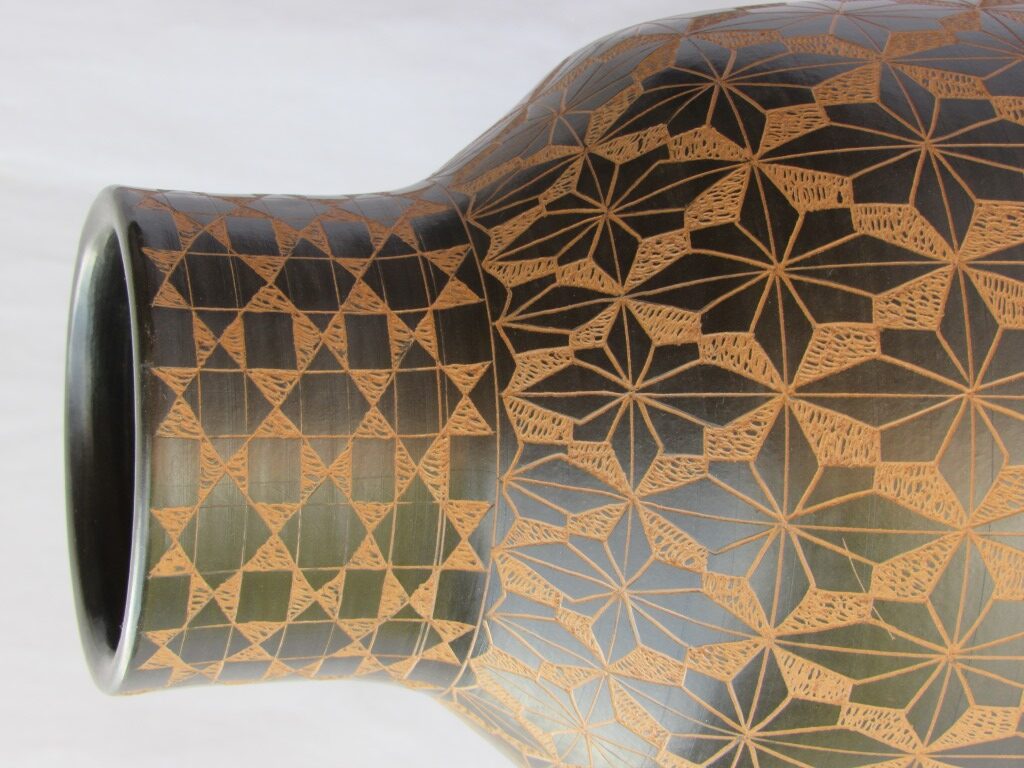
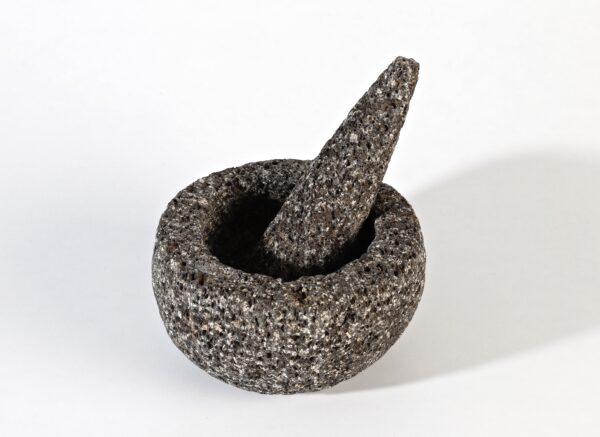
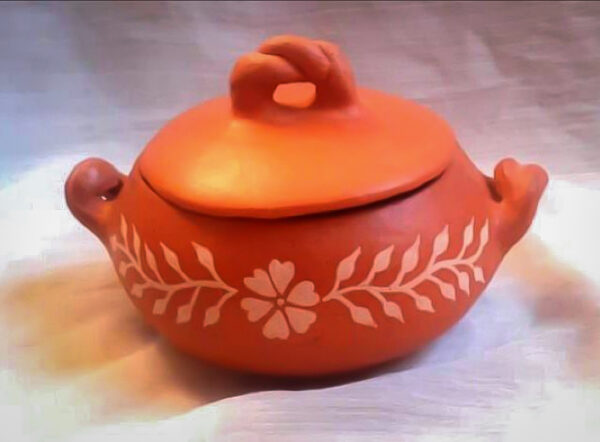
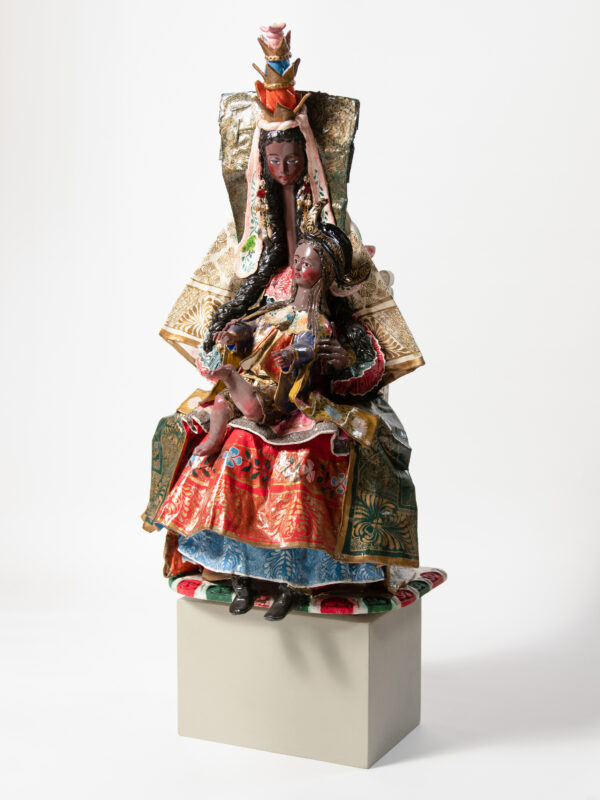

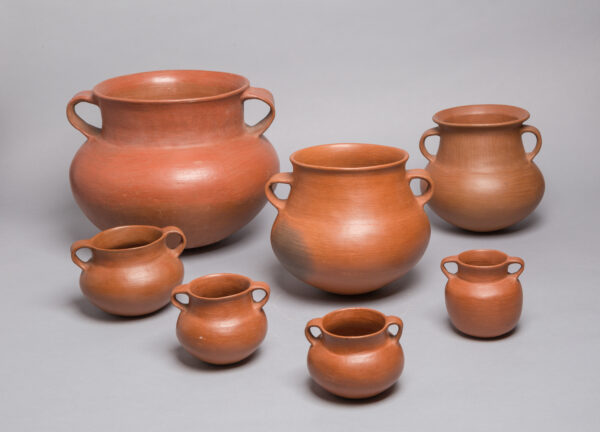
Reviews
There are no reviews yet.